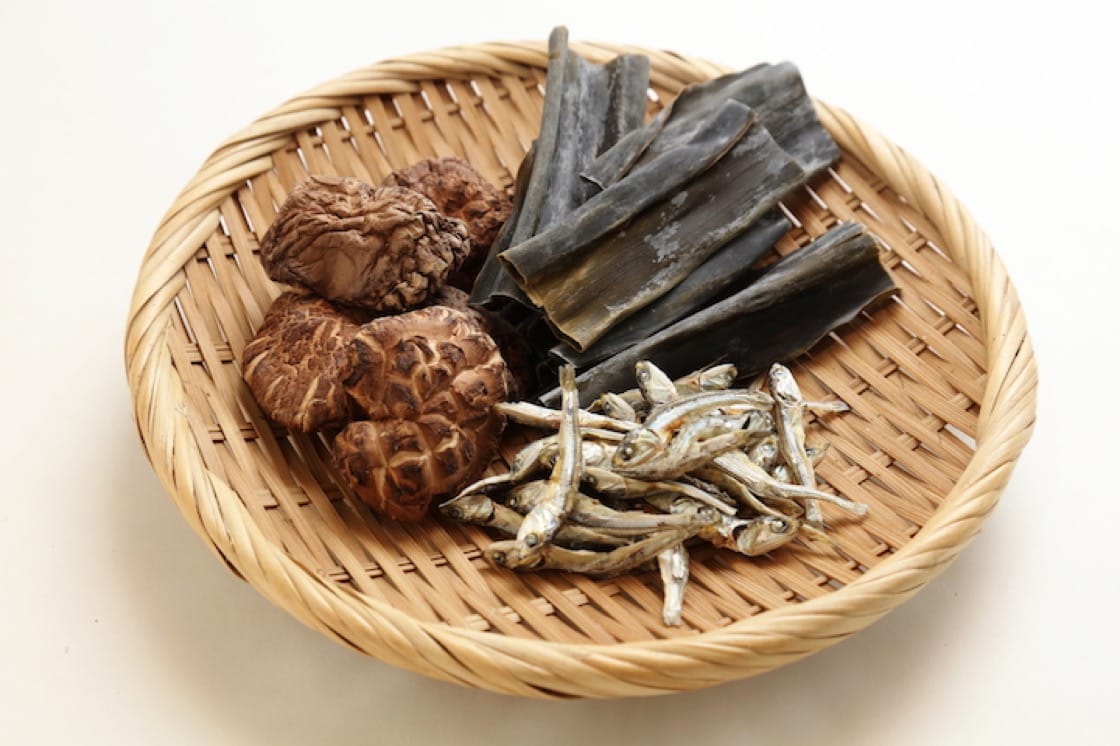What makes miso soup, ramen and soba dipping sauces taste so distinctly Japanese? The answer is dashi, a simple and savoury stock used as a base in Japanese cooking — no broth would be as rich in flavour without it. It is mainly made from kombu (sheets of edible dried sea kelp) and smoky katsuobushi, which are shavings of dried, fermented and smoked skipjack tuna. That being said, it can be made from other dried fish ingredients as well, such as jarko (small sardines) and saba (mackerel), both of which make higher-quality dashi.
Why Is Dashi Important?
Dashi is the determining factor that differentiates high-quality Japanese cuisine from that of average quality. It brings out the umami taste in food, which is the fifth taste after the four basic tastes: sweet, sour, salty and bitter. Umami is composed of glutamic acid and inosinic acid.
Although the standard dashi recipe involves soaking kelp for hours before simmering it briefly in heated water to extract its flavour, many eateries depend on Hondashi, a commercial-quality dashi powder containing monosodium glutamate, to add taste to their dishes. The flavour that such commercial dashi produces is often flat and superficially salty, without any other nuances to the palate. Dashi that has been produced by the careful soaking and straining of proper kombu (kelp) and ingredients, on the other hand, will extract a richer taste of seaweed that does not leave the diner with a dry mouth the way that dashi with MSG does. The quality of dashi, therefore, can change the entire taste of Japanese cuisine.

Besides commercial-quality dashi, there is also the general niban (second) dashi, which consists of general-quality kombu and katsuobushi. Even in higher quality dashi, there exists different tiers of them. The ichiban (first) dashi combines both high-quality kombu and katsuobushi to produce a sweet, yet umami taste. This richly flavoured dashi is mainly used in clear soups and not in soba and udon, as the flavour of the noodles would overwhelm the delicate taste of ichiban dashi. Niban dashi is the second brew of the leftover kombu and katsuobushi used to make ichiban dashi. This gives a less intense flavour to the dashi it produces, with a strong fishy smell. This is thus suitable for general recipes.
The ingredients used can even be varied by using dried fish like ago (flying fish), which can be used in miso soup and noodles, and urume (sardines), which is lighter in colour and clearer in flavour.




















